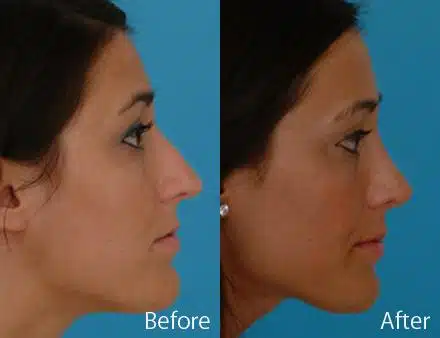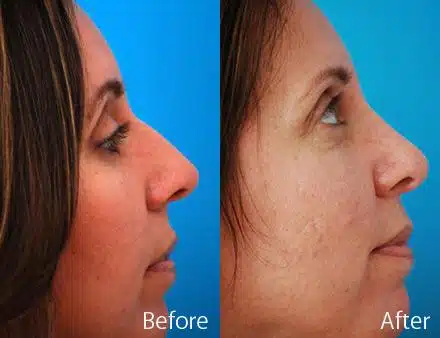Comparing Non-Surgical and Traditional Rhinoplasty

Are you considering changing your nose shape but unsure which cosmetic procedure is right for you? The debate of nose filler vs rhinoplasty is common among patients who want to improve their appearance. With both options available, it’s important to understand what each one offers and how they can address your individual needs.
When deciding between these rhinoplasty procedures, the choice often comes down to your personal goals, expectations, and budget. For some, subtle improvements for aesthetic purposes, like correcting a drooping nose tip, are best achieved with fillers. For others, more extensive changes such as reducing a large hump on the nose bridge may call for surgery. Ultimately, each approach can benefit different patients depending on the changes they seek.
Which Type of Rhinoplasty is Best for Me?
The best option between fillers and surgery largely depends on your unique circumstances. Patients who want immediate, temporary enhancements with minimal downtime may prefer nonsurgical methods, while those who desire more dramatic or structural changes may need surgery. Both rhinoplasty procedures offer valuable solutions, but what works best for one person might not be the right choice for another.
Your cosmetic goals, financial investment, and willingness to undergo recovery are key factors in the decision-making process. Whether it’s correcting a drooping nose tip, smoothing out a large hump on the nose bridge, or enhancing your nasal shape for aesthetic purposes, understanding your priorities will help determine the most suitable treatment path.
Differences of Each Procedure
Understanding the distinctions between non-surgical fillers and surgical procedures is essential before deciding which option best matches your needs. Each approach offers unique benefits and limitations, from the temporary, minimally invasive nature of injectable fillers to the more comprehensive, long-term changes achieved through surgery. By exploring these differences, patients can better determine which path aligns with their goals and expectations.
Liquid Rhinoplasty
This procedure is performed using dermal fillers, most often formulated with hyaluronic acid, to enhance and reshape the nose. The injector carefully places the filler along key areas such as the nasal bridge or tip, smoothing out irregularities and improving balance. Because it involves only small injections, the treatment is quick, minimally invasive, and does not require anesthesia. Patients see immediate improvements and can return to their daily routine shortly after the session.
Surgical Rhinoplasty
Unlike filler-based treatments, surgical rhinoplasty involves reshaping the underlying nose structure through carefully planned incisions. Depending on the patient’s needs, bone and cartilage may be reduced, repositioned, or augmented to achieve the desired form and function. This surgery is typically performed under anesthesia in an operating room, allowing for significant and permanent changes. Because it directly modifies the framework of the nose, surgical rhinoplasty offers a level of precision and durability that nonsurgical methods cannot match.
Pros and Cons of Each Procedure
Every treatment option has its strengths and limitations, and understanding both sides helps patients make informed decisions. While one approach may excel in convenience or cost, the other may provide more lasting or comprehensive results. By weighing the pros and cons of each method, you can see how they compare and decide which better supports your goals.
Nose Filler Advantages
As a non-invasive procedure, nose fillers provide a quick and simple way to refine nasal contours without surgery. Patients benefit from minimal downtime, immediate improvements, and the flexibility of temporary results. This makes liquid rhinoplasty ideal for those seeking subtle adjustments, testing potential changes before surgery, or enhancing overall balance with little disruption to daily life.
Surgical Nose Job Advantages
Surgical rhinoplasty offers benefits that go beyond what fillers can achieve, as it directly alters the entire nasal structure. This means that issues such as wide nostrils, functional breathing problems, or significant bumps can be permanently corrected. Patients who choose this path can expect dramatic, lasting results that address both form and function, making it the most comprehensive option for those seeking transformative changes.
Nose Filler Disadvantages
While convenient, nose fillers come with certain limitations. Because the results are temporary, patients must return for repeat treatments to maintain their look. There is also a small risk of filler migration, where the product shifts from its intended placement and alters the appearance. Additionally, fillers cannot correct significant structural issues, limiting their use to surface-level refinements. These drawbacks make nonsurgical methods better suited for minor enhancements rather than major corrections.
Surgical Nose Job Disadvantages
Despite its transformative potential, surgical rhinoplasty carries drawbacks that patients must carefully consider. Recovery is longer and more involved, with swelling and bruising that can take weeks to fully resolve. As with any operation, there are surgical risks and the possibility of scarring. In some cases, patients may even face the need for revision surgery if results do not meet expectations or healing does not progress as planned. The higher cost and extended downtime also make it a more demanding commitment compared to fillers.
Secure Your Safe Treatment Experience with Dr. Daniel G. Becker.
Join our satisfied clients who’ve experienced safe, effective treatments.
The Recovery of Each Procedure
Recovery experiences differ greatly between fillers and surgery, and knowing what to expect can help patients prepare for the journey ahead. Non-surgical fillers typically involve little to no recovery time, while surgery requires a more involved healing process. Understanding these differences allows you to plan realistically for your lifestyle and personal needs.
Liquid Nose Job Recovery
Recovery from a liquid rhinoplasty is generally simple and quick. Patients may notice mild swelling or redness at the injection sites, but these effects usually resolve within a few days. Because there are no incisions, stitches, or anesthesia, most people return to daily activities almost immediately. Following basic aftercare instructions, such as avoiding pressure on the nose or strenuous exercise for a short time, helps ensure smoother healing and longer-lasting results.
Nose Job Surgery Recovery
Surgical rhinoplasty involves a more extensive healing process compared to fillers. Patients can expect swelling and bruising around the nose and eyes, which gradually improve over several weeks. Stitches or splints may be used initially to support the healing nose structure, and strenuous activities should be avoided during recovery. While the process requires patience, careful adherence to post-operative instructions ensures better outcomes and helps patients achieve long-term, natural-looking results.
Costs of Each Treatment
Cost is often one of the most influential factors when deciding between fillers and surgery. Non-surgical options tend to be less expensive upfront, while surgical rhinoplasty is a more significant financial investment but can provide long-lasting results. Understanding the differences in pricing and what each includes will help patients make informed choices that align with their goals and budget.
Nonsurgical Rhinoplasty Costs
The overall price of a nonsurgical rhinoplasty depends on several factors, including the type of filler used, the injector’s expertise, and the amount of product needed to achieve the desired look. Geographic location can also influence cost, as clinics in larger cities often charge more. While the upfront expense is lower than surgery, patients should consider the need for maintenance sessions to sustain results, which adds to the long-term investment.
Rhinoplasty Surgery Costs
The cost of surgical rhinoplasty is influenced by several key factors, including the complexity of the case, the surgeon’s expertise, and the facility where the operation is performed. Anesthesia fees and post-operative care are also part of the overall expense. While the initial investment is higher than fillers, the permanence of the results often makes it worthwhile for patients seeking lasting structural changes and improved function.
Surgical Rhinoplasty Results


*All patients are unique and individual results may vary.
Consult With a Facial Plastic Surgeon Today
Choosing the right expert makes all the difference when it comes to achieving a natural and balanced look. A qualified specialist understands the details of nasal anatomy and the artistry needed to refine the nasal profile without compromising safety. The right guidance ensures your results align with your expectations and aesthetic goals.
At the Becker Rhinoplasty Center, Dr. Daniel Becker has decades of experience performing both nonsurgical and surgical procedures, including complex cases such as revision rhinoplasty. As a respected Clinical Professor and author in the field, Dr. Becker combines academic expertise with hands-on excellence. Call us today at 856-772-1617 or 856-589-6673, or visit our contact page to schedule a consultation and take the first step toward your transformation.